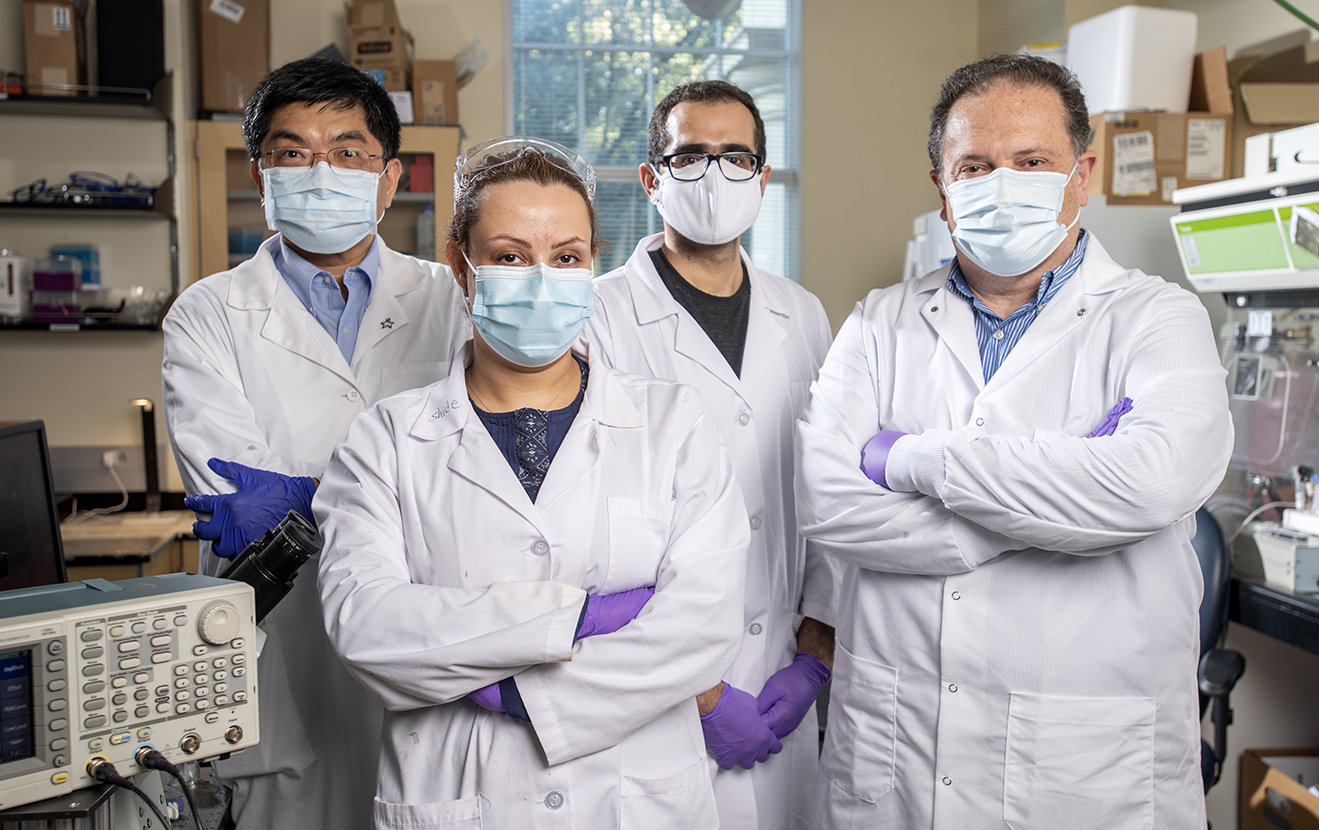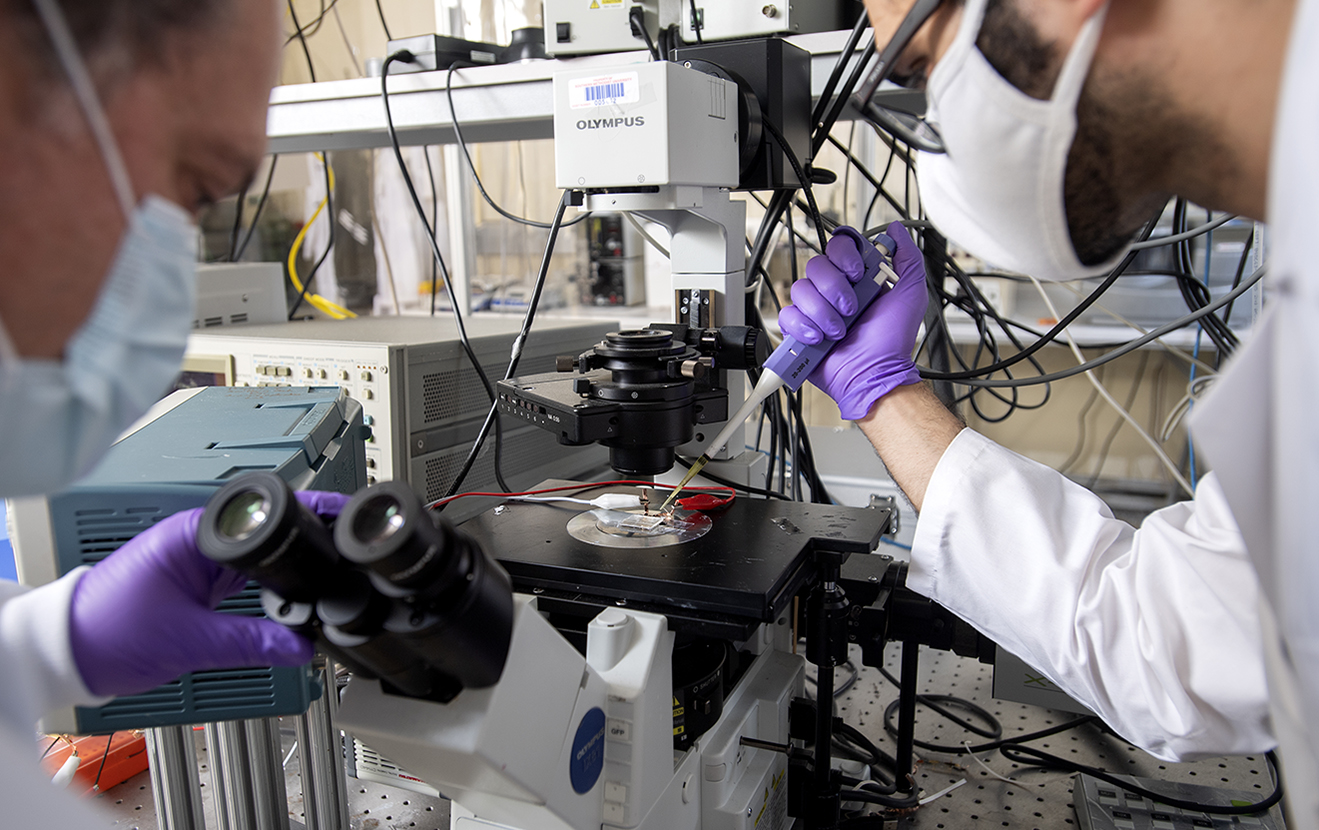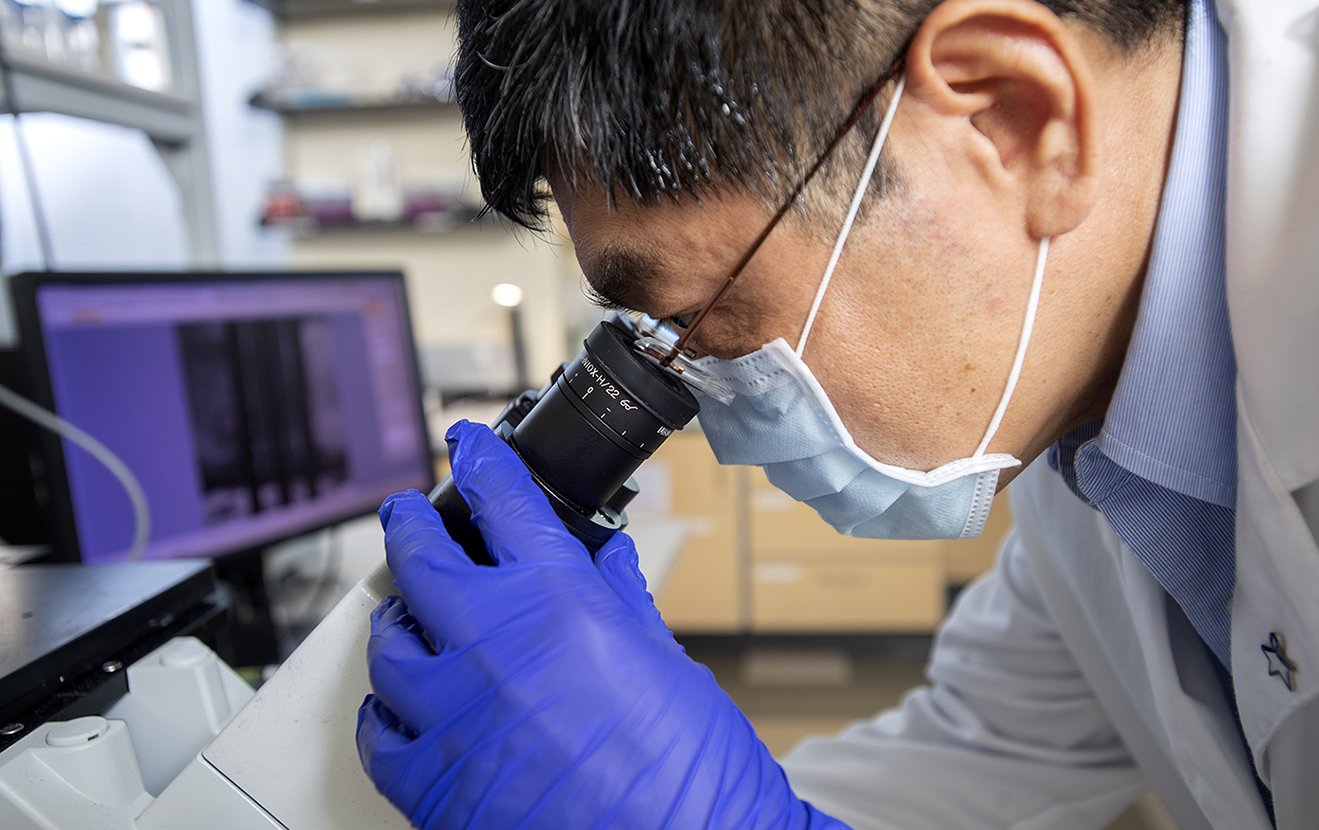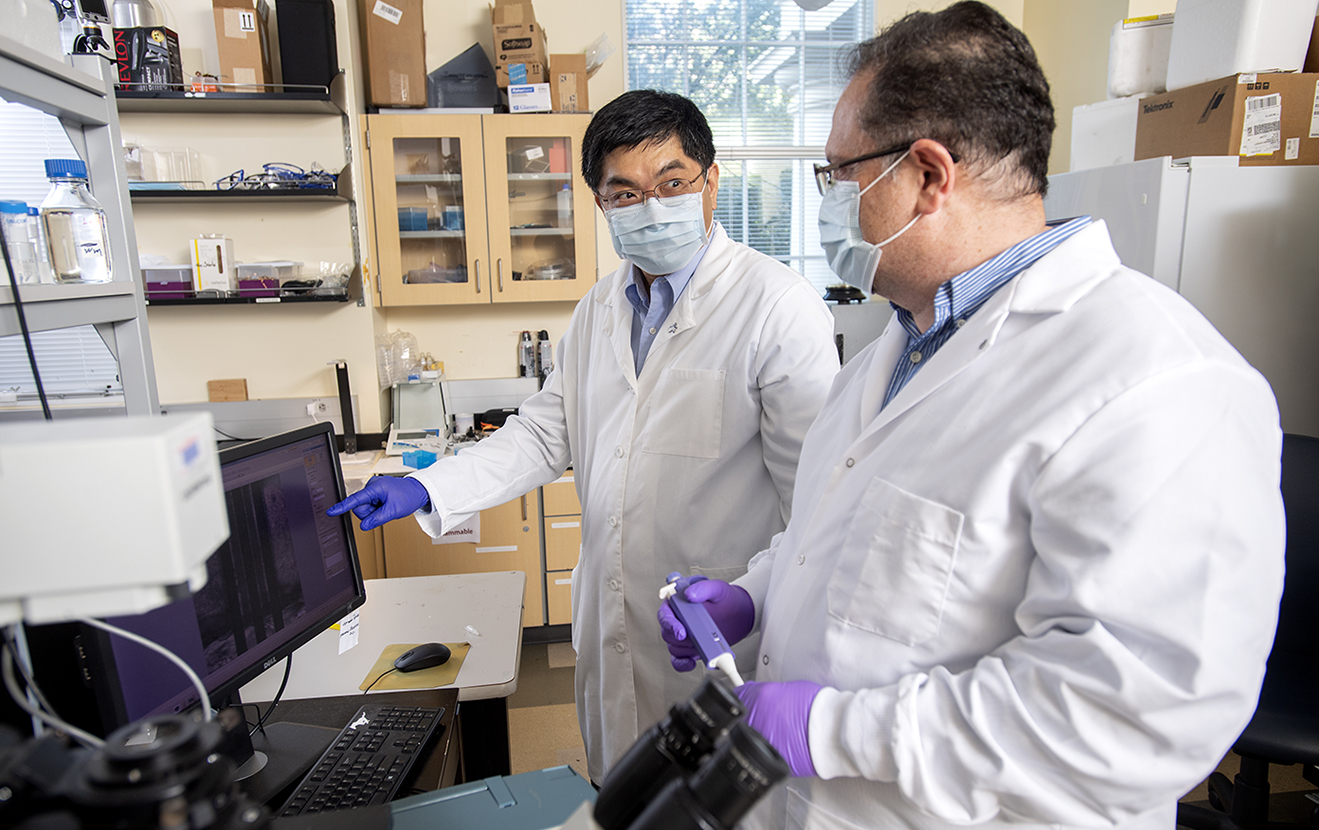SMU researchers put the COVID-19 pandemic to work as a proving ground for a fast, accurate and affordable immune response test. While its timesaving properties give it an edge, what really sets the “lab on a chip” device apart is the lifesaving potential it holds for rural areas and emerging countries where medical resources are scarce. Lead researchers Ali Beskok and J.-C. Chiao, professors in the Lyle School of Engineering, are seeking funding to fully develop the potential of their breakthrough test.
Here’s how it works:
A drop of blood is applied to a microfluidic chip.
The procedure starts with a prick on the finger to draw a small amount of blood, which is applied to a microfluidic chip in a disposable cartridge. This new test has major advantages over other medical assays: It screens for multiple antibodies and quantitatively displays their levels. Active mixing in the device produces a fast response. It’s inexpensive, and no medical training is required to use it.
A filter embedded in the chip draws out the plasma from the blood.
A filter in the chip draws out the plasma from the blood. Plasma contains antibodies, which are produced by the body’s immune system when it detects antigens – a virus, bacteria or other harmful invader causing illness. The ninjalike proteins neutralize antigens by binding to them.
The chip is inserted into a device and electrified.
Among the researchers’ innovations is a portable unit that uses electrical measurements to efficiently detect antibodies in the blood plasma. In addition to COVID-19, the test could be used to identify other diseases with known antibody-antigen binding, including malaria and tuberculosis.
The device detects antibodies.
A cross-checking mechanism provides crucial insights. Because different antibodies show up at varying intervals in the infection timeline, the test makes it possible to pinpoint whether someone has just been infected or is in the recovery stage. It can also potentially detect variants.
The device sends the results to your cell phone.
It takes about two to three minutes for antibodies to be detected. When they are, signals are transmitted via Bluetooth to a user’s smartphone where an app provides immediate results and health instructions. The overall process is significantly faster than current approaches.
SMU has a patent pending for the technology behind the test, which is called Multiplexed Assay for the Immune Response to COVID-19 (MAIRC). In addition to helping save lives in real time, Beskok and Chiao say their rapid-response test could play a vital role in the early detection of future global health crises.



